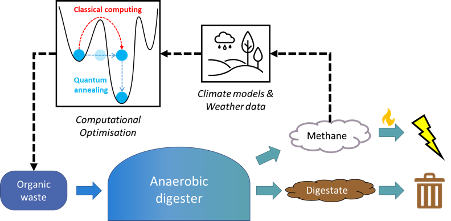QuEST brings together researchers from all four faculties at Imperial College London to translate discoveries in quantum science into transformative quantum technologies.
Seed funding for research teams
In April-June 2023, we supported three short-term (12 week) research projects. This funding was targeted towards enabling the development of new cross-disciplinary collaborations and research directions in quantum research at the university.
Research group accordion widget
- Quantum annealing for simulation optimisation with applications in climate systems and wastewater-driven energy facilities
- Quantum coherent microwave‐to-optical transduction
- Quantum data acquisition system
Quantum annealing for simulation optimisation with applications in climate systems and wastewater-driven energy facilities
Quantum coherent microwave‐to-optical transduction
Quantum data acquisition system
Seed funding for post-doctoral researchers
In March-June 2024, we supported 9 research projects conducted by postdocs across the university with up to £5000 per project. The funds are intended to help early career researchers develop and validate their own ideas and take a step towards research independence.
Postdoc accordion widget
- Deterministic loading of single atoms into optical tweezer traps
- Machine learning for quantum experiment control
- Polarisation stabilisation for quantum sensors
- Quantum sensing for undergraduate teaching laboratories
- Realising a Bosonic Josephson junction using a semiconductor Bose-Einstein condensate of photons
- Realizing quantum optical neural networks through programmable photonic processors
- Shaped excitation for the controlled entanglement of electron-nuclear spin states in permanent, and light-induced, spin-qubits
- Superconducting magnetic microresonators for quantum sensing technologies
- Widefield quantum imaging of nanoscale magnetic systems
Deterministic loading of single atoms into optical tweezer traps
Machine learning for quantum experiment control
Polarisation stabilisation for quantum sensors
Quantum sensing for undergraduate teaching laboratories
Realising a Bosonic Josephson junction using a semiconductor Bose-Einstein condensate of photons
Realizing quantum optical neural networks through programmable photonic processors
Shaped excitation for the controlled entanglement of electron-nuclear spin states in permanent, and light-induced, spin-qubits
Superconducting magnetic microresonators for quantum sensing technologies
Widefield quantum imaging of nanoscale magnetic systems


 Project leads: Dr Michael Vanner, Department of Physics
Project leads: Dr Michael Vanner, Department of Physics